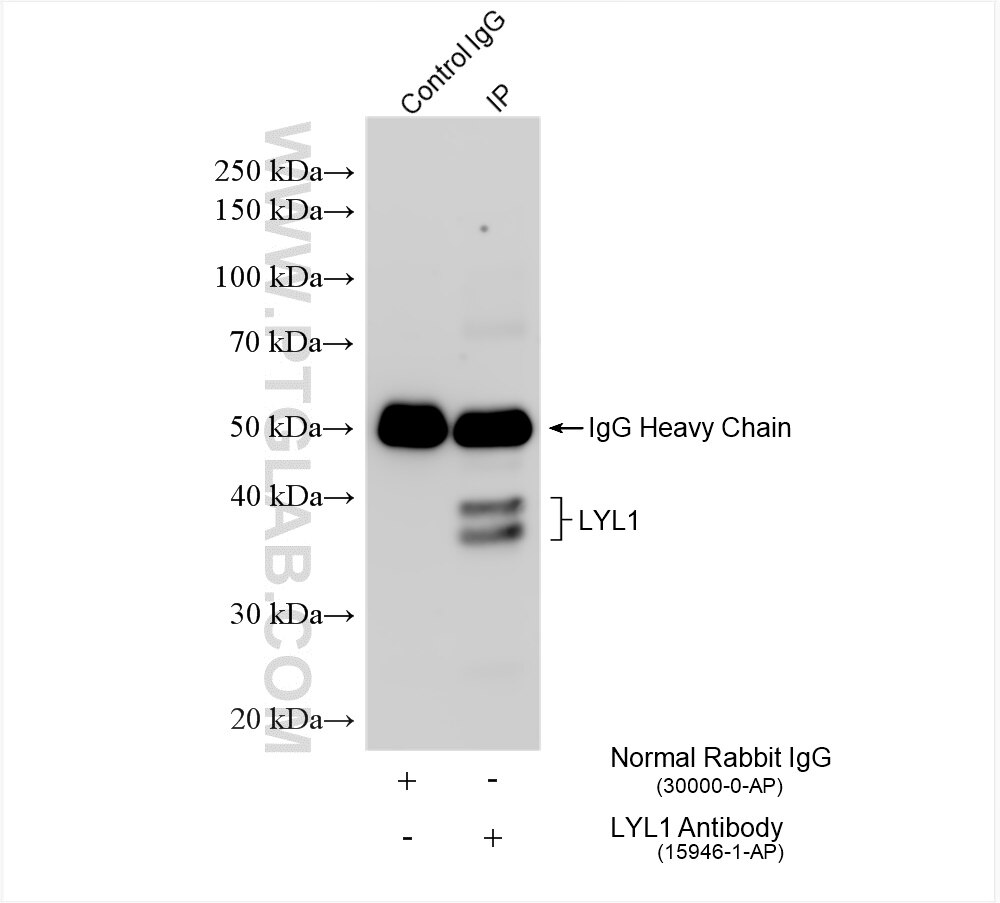LYL1 Polyklonaler Antikörper
LYL1 Polyklonal Antikörper für IP, ELISA
Wirt / Isotyp
Kaninchen / IgG
Getestete Reaktivität
human
Anwendung
IP, ELISA
Konjugation
Unkonjugiert
Kat-Nr. : 15946-1-AP
Synonyme
Geprüfte Anwendungen
| Erfolgreiche IP | K-562-Zellen |
Empfohlene Verdünnung
| Anwendung | Verdünnung |
|---|---|
| Immunpräzipitation (IP) | IP : 0.5-4.0 ug for 1.0-3.0 mg of total protein lysate |
| It is recommended that this reagent should be titrated in each testing system to obtain optimal results. | |
| Sample-dependent, check data in validation data gallery | |
Produktinformation
15946-1-AP bindet in IP, ELISA LYL1 und zeigt Reaktivität mit human
| Getestete Reaktivität | human |
| Wirt / Isotyp | Kaninchen / IgG |
| Klonalität | Polyklonal |
| Typ | Antikörper |
| Immunogen | LYL1 fusion protein Ag8528 |
| Vollständiger Name | lymphoblastic leukemia derived sequence 1 |
| Berechnetes Molekulargewicht | 30 kDa |
| Beobachtetes Molekulargewicht | 35-40 kDa |
| GenBank-Zugangsnummer | BC002796 |
| Gene symbol | LYL1 |
| Gene ID (NCBI) | 4066 |
| Konjugation | Unkonjugiert |
| Form | Liquid |
| Reinigungsmethode | Antigen-Affinitätsreinigung |
| Lagerungspuffer | PBS with 0.02% sodium azide and 50% glycerol |
| Lagerungsbedingungen | Bei -20°C lagern. Nach dem Versand ein Jahr lang stabil Aliquotieren ist bei -20oC Lagerung nicht notwendig. 20ul Größen enthalten 0,1% BSA. |
Hintergrundinformationen
Lymphoblastic leukemia1 (LYL1) is a proto-oncogenic transcription factor found upregulated in patients with T-cell acute lymphoblastic leukemia (T-cell ALL). LYL1 has an important role in hematopoietic stem cell biology, normal hematopoiesis and leukemia. It is expressed throughout the hematopoietic lineages with the exception of T-cells. LYL1 shows two bands in the WB detection, where the upper band is the phosphorylated form and the lower band is the non-phosphorylated form (PMID: 10023675, PMID: 20844761).
Protokolle
| PRODUKTSPEZIFISCHE PROTOKOLLE | |
|---|---|
| IP protocol for LYL1 antibody 15946-1-AP | Protokoll herunterladen |
| STANDARD-PROTOKOLLE | |
|---|---|
| Klicken Sie hier, um unsere Standardprotokolle anzuzeigen |


